How to Build a Chicken Wire Garden Fence
Below you will find a step-by-step guide on how to build a chicken wire garden fence with different posts.
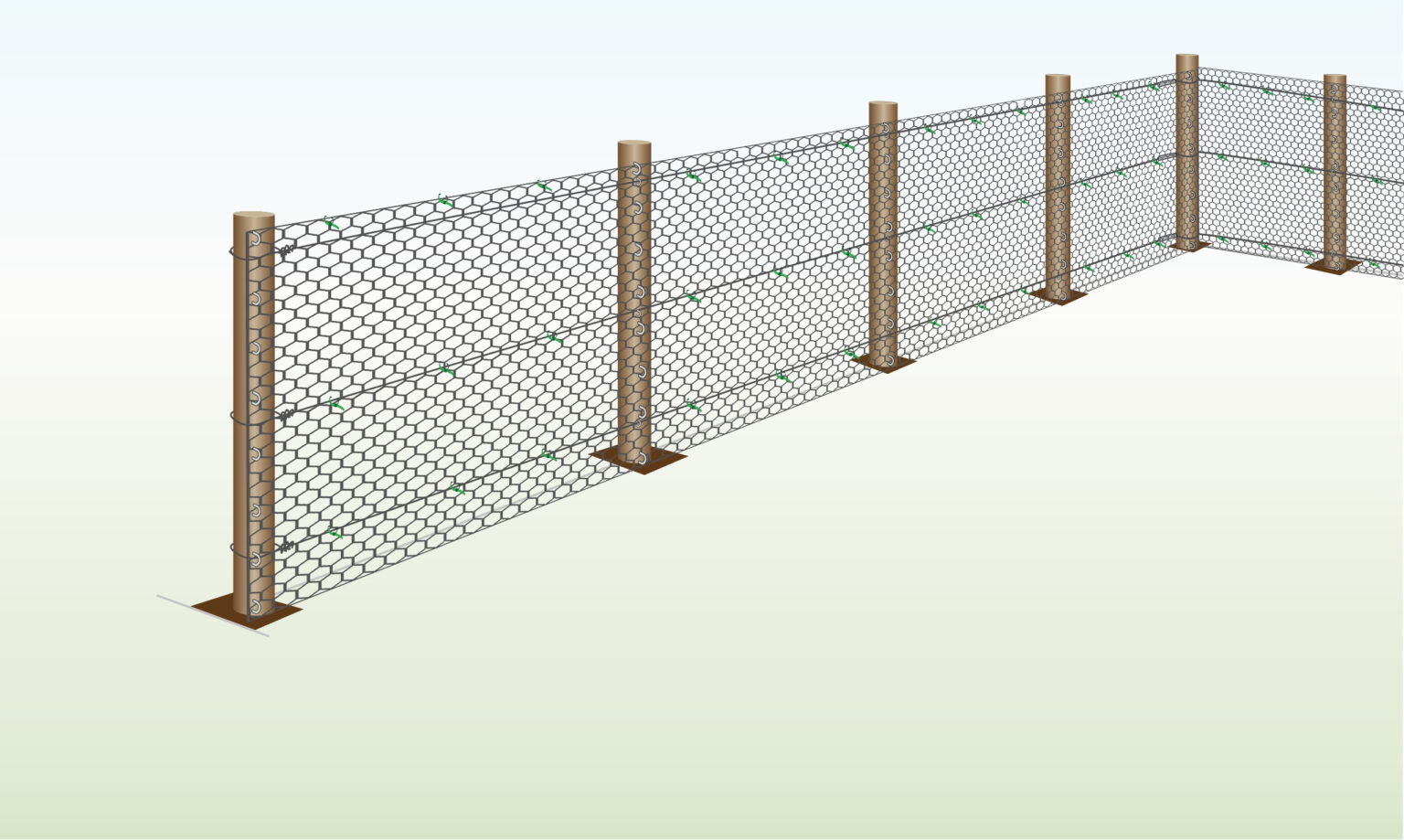
- Experience Required: Medium
- Tools Required: Protective gloves, Wire cutter, Tape measure, Spirit level, Spade, String, Plier, Hammer (if using staples), Post driver (if using T posts)
- Materials Required: Chicken wire or Chicken wire PVC, Staples (for wood) or Cable ties (for metal), Wooden or T posts, Tensioning wire, Radisseur, Pegs (optional)
METHOD A – Step 1) Mark Area & Post Location
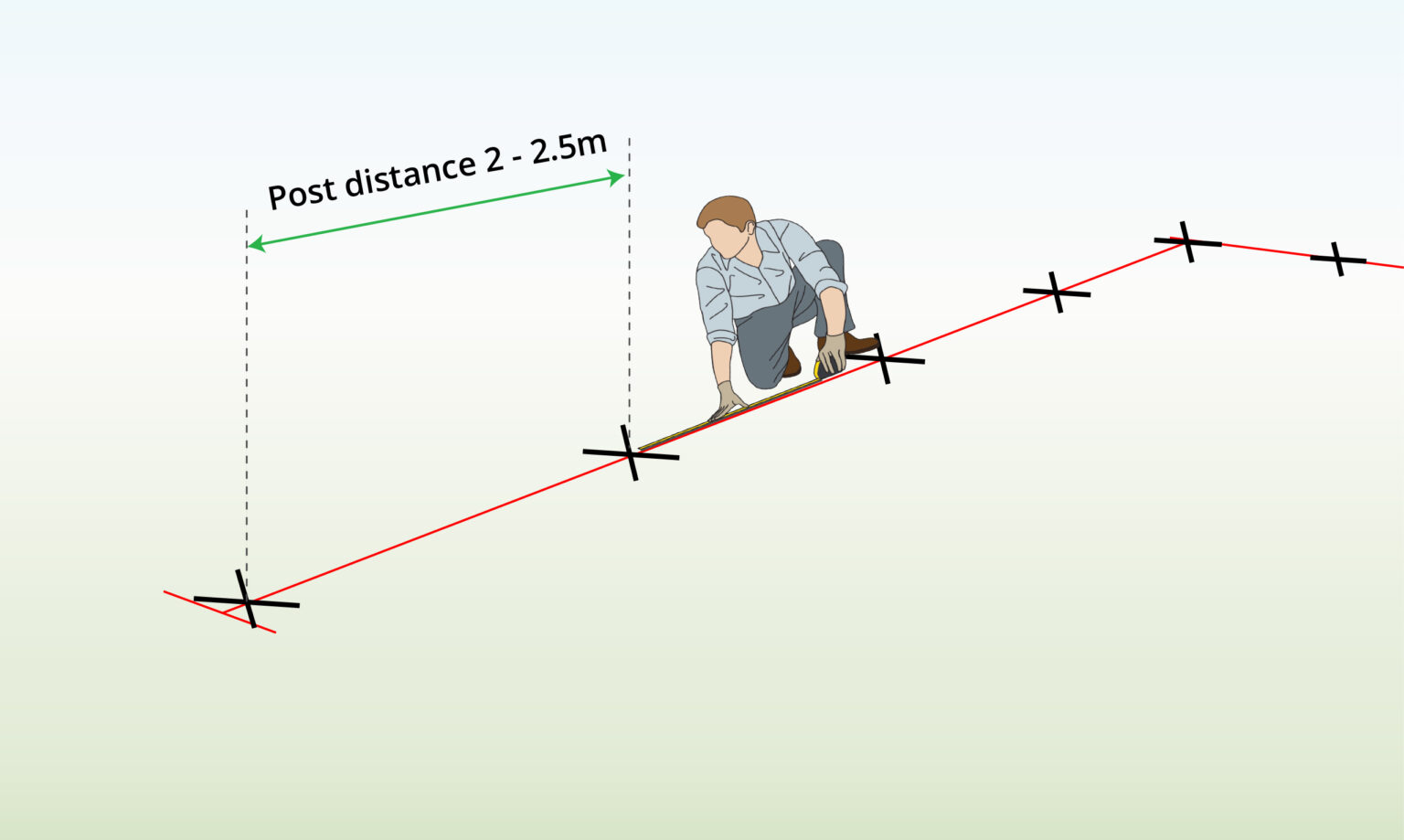
- Use spray paint or string to measure and mark the length of the area where you’ll attach the netting.
- Additionally, mark the post positions, spacing them about 2 – 2.5 meters apart.
- For increased stability, reduce the distance between your fence posts.
METHOD A – Step 2) Dig Holes & Insert Posts
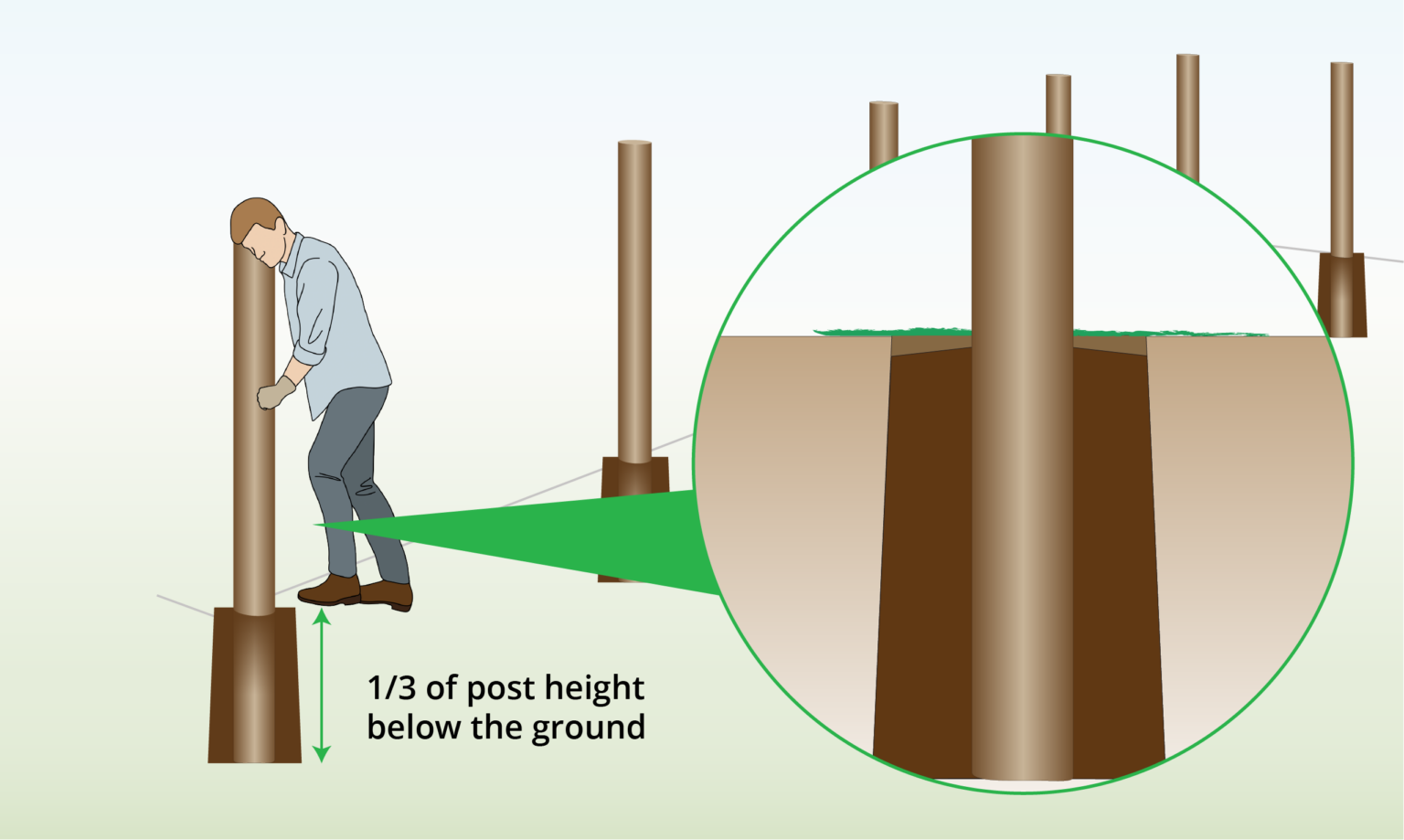
- Dig a hole for your posts, making sure the depth is approximately one-third of the post’s length.
METHOD A – Step 3) Check for Post Height & Straightness
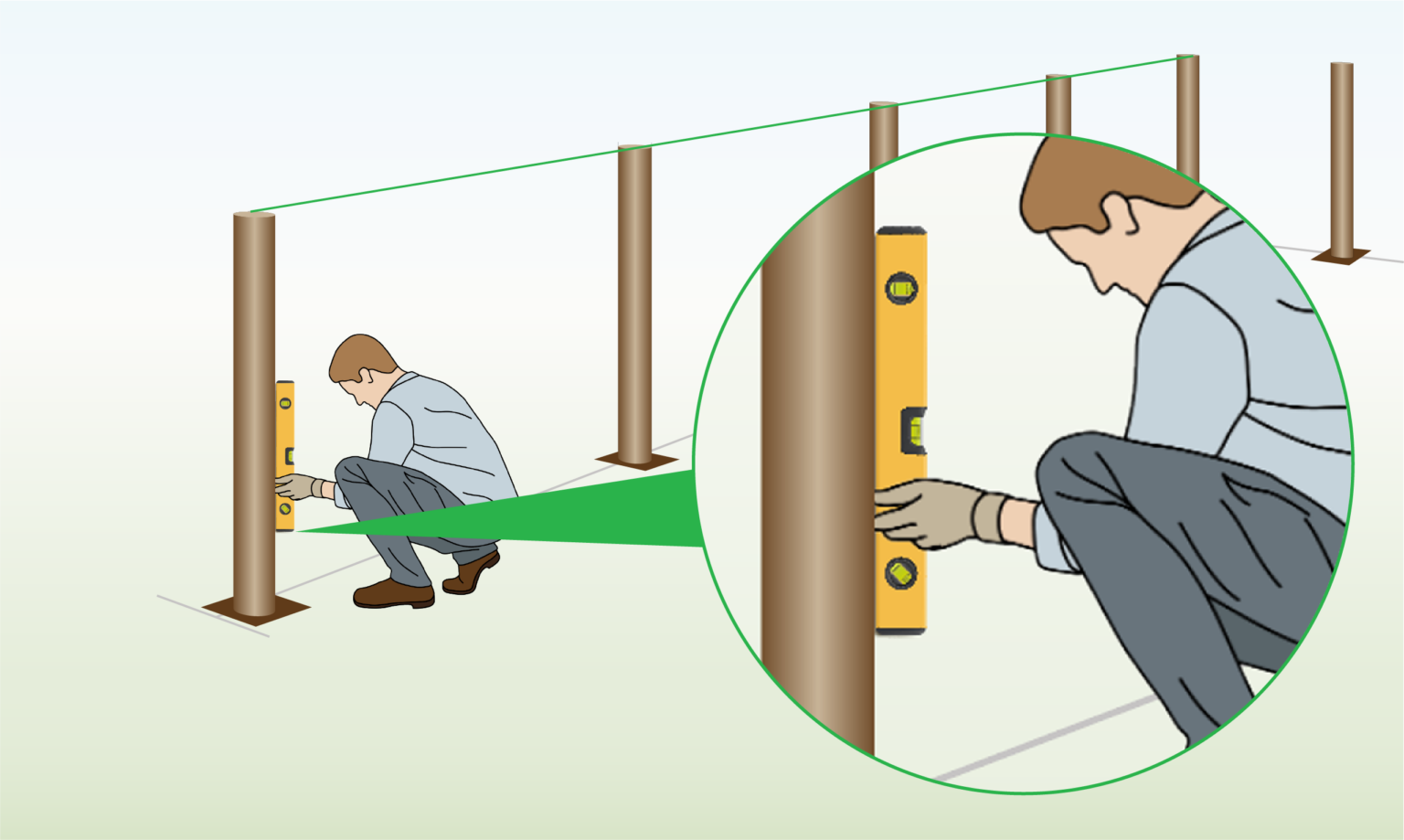
- Use a spirit level to ensure the posts are straight and verify that they are all the same height.
METHOD A – Step 4) Install Tensioning Line
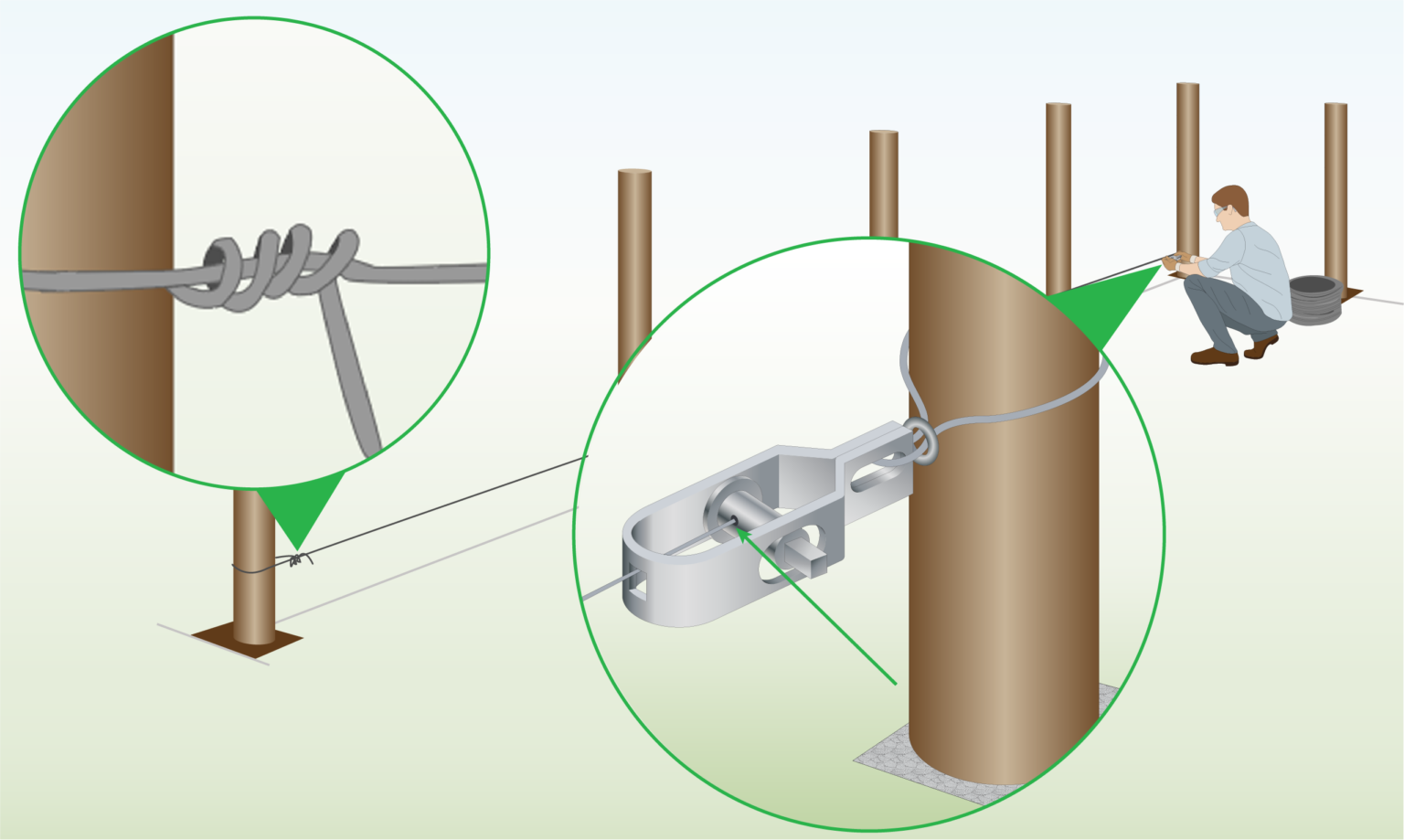
- Mark the line location in multiple rows and wrap it around the first post 4-5 times.
- Then, use a separate piece to attach a radisseur to the last post.
- Weave the line through the radisseur’s middle hole and twist the pin clockwise with pliers.
METHOD A – Step 5) Secure Wire to Middle Posts
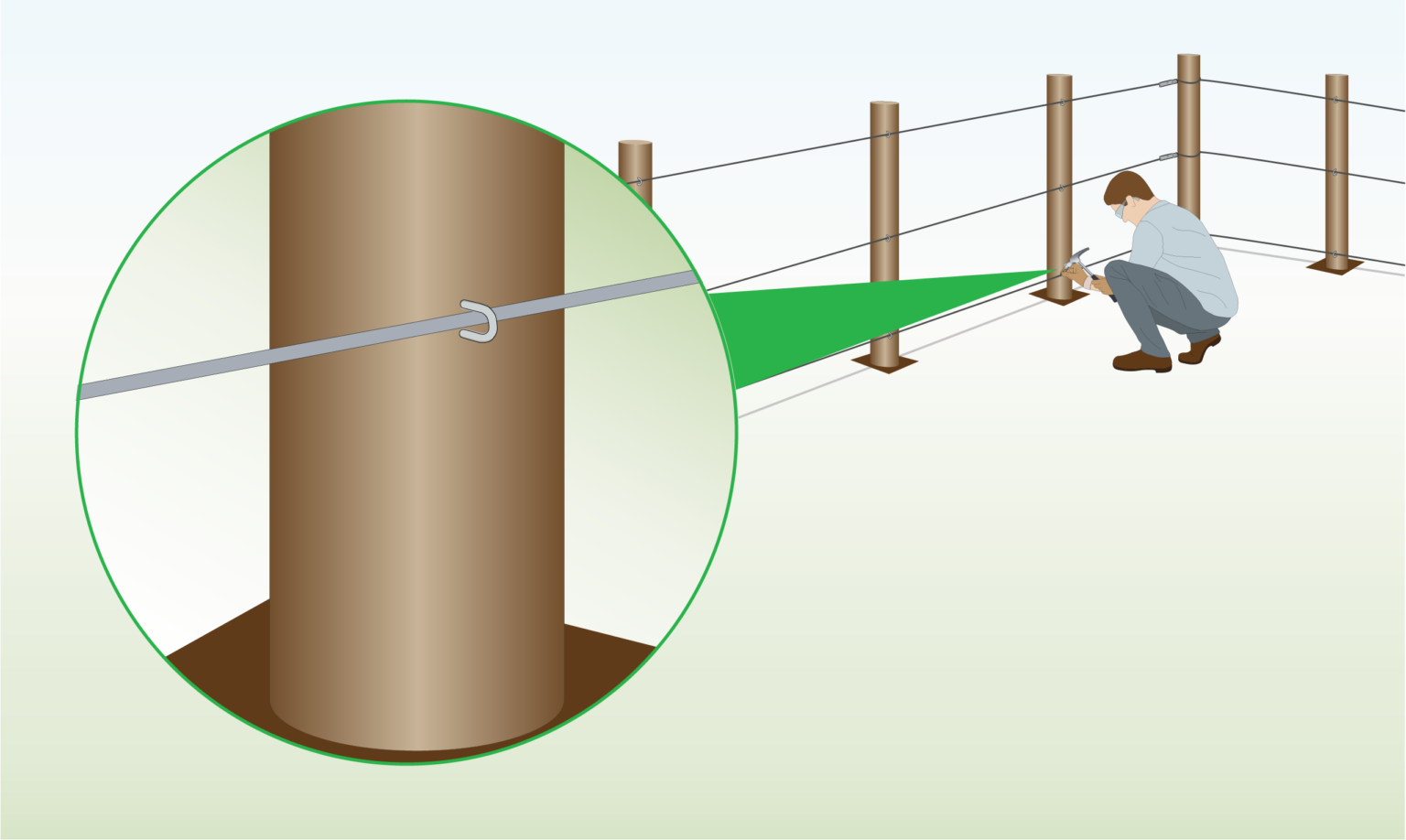
- Fasten the tensioning line to the middle posts with staples.
METHOD A – Step 6) Staple Mesh to First Post
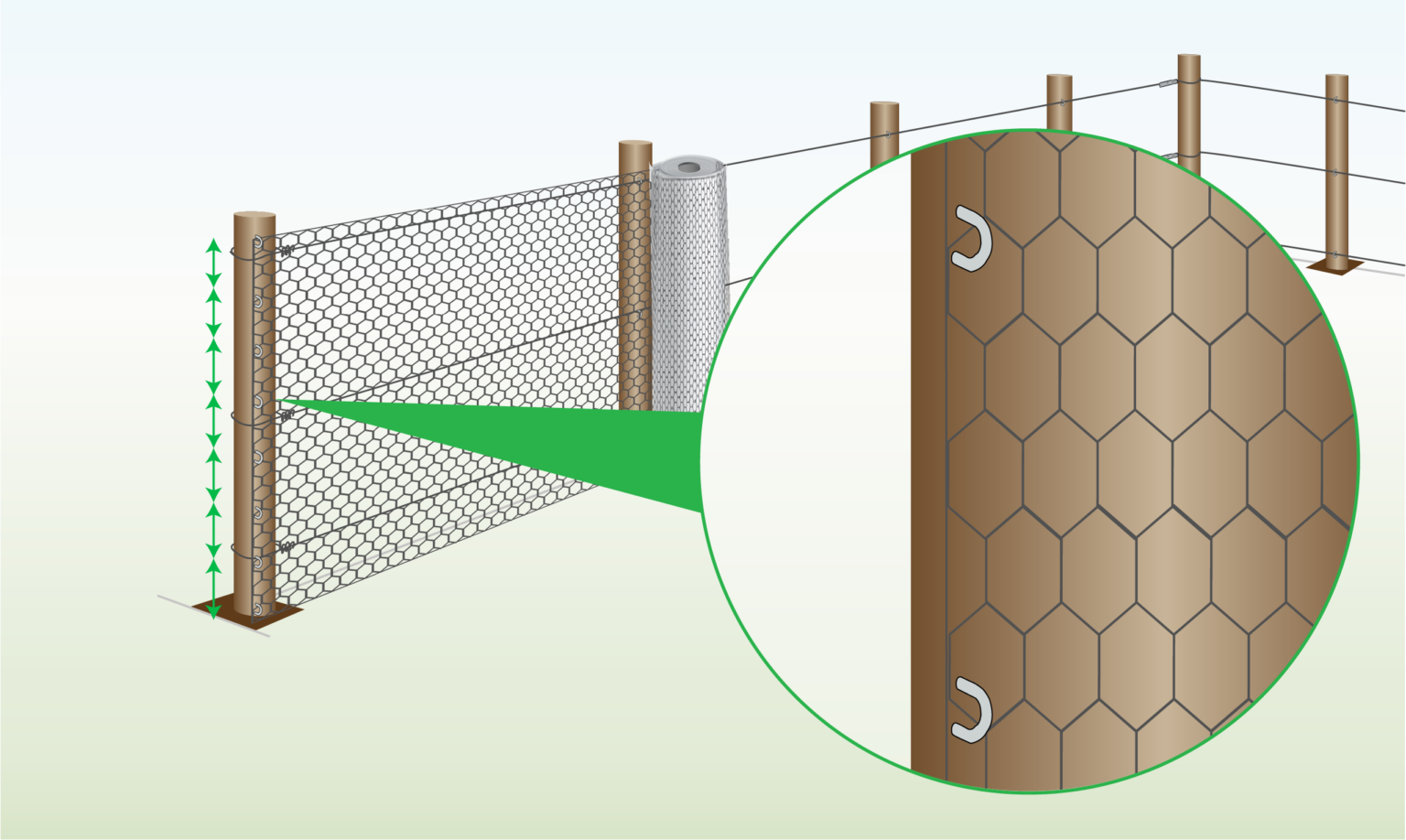
- Attach the chicken wire to the wooden posts using staples spaced 15 cm apart.
- Ensure the mesh remains straight and taut throughout the process.
METHOD A – Step 7) Pull Mesh Tight & Continue Attaching
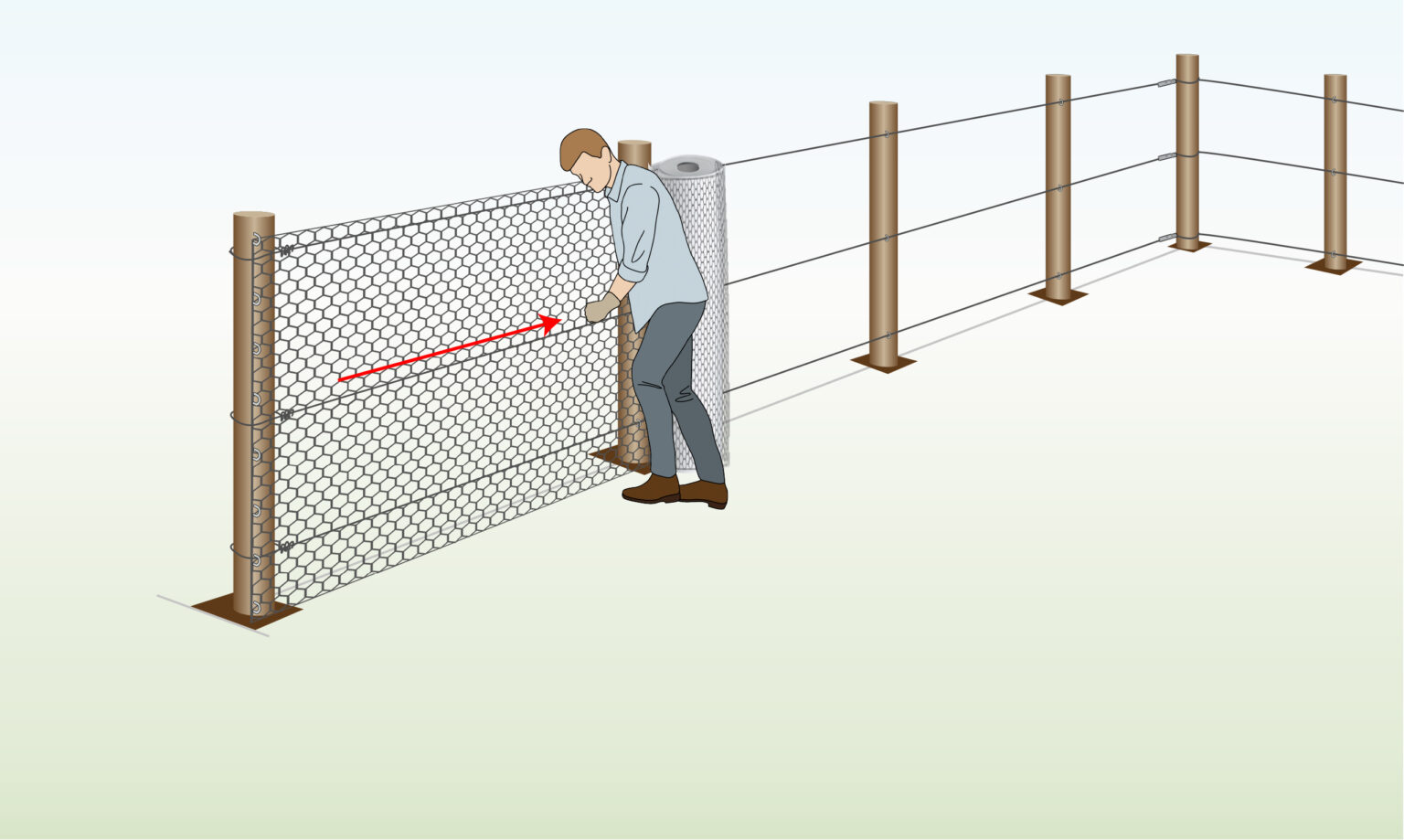
- Make sure to pull the mesh taut without overstretching it to maintain stability, as overstretching can weaken it and increase the risk of breaking under pressure.
- Continue attaching the mesh by securing it to the remaining posts with staples.
METHOD A – Step 8) Secure Remaining Netting
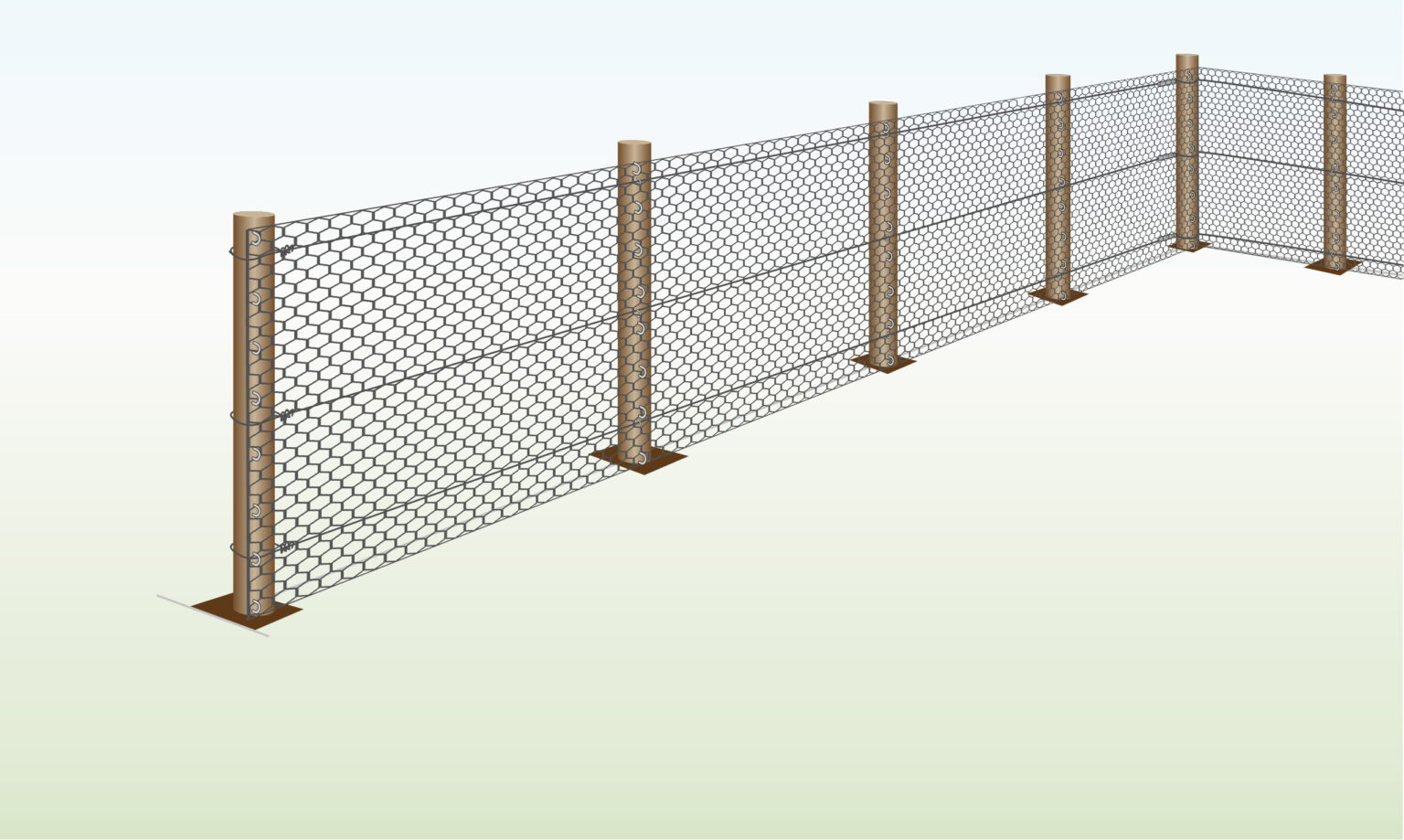
- Finish attaching the remaining mesh by following steps 6 and 7 to complete your chicken fence design.
METHOD A – Step 9) Secure Mesh to Tension Line
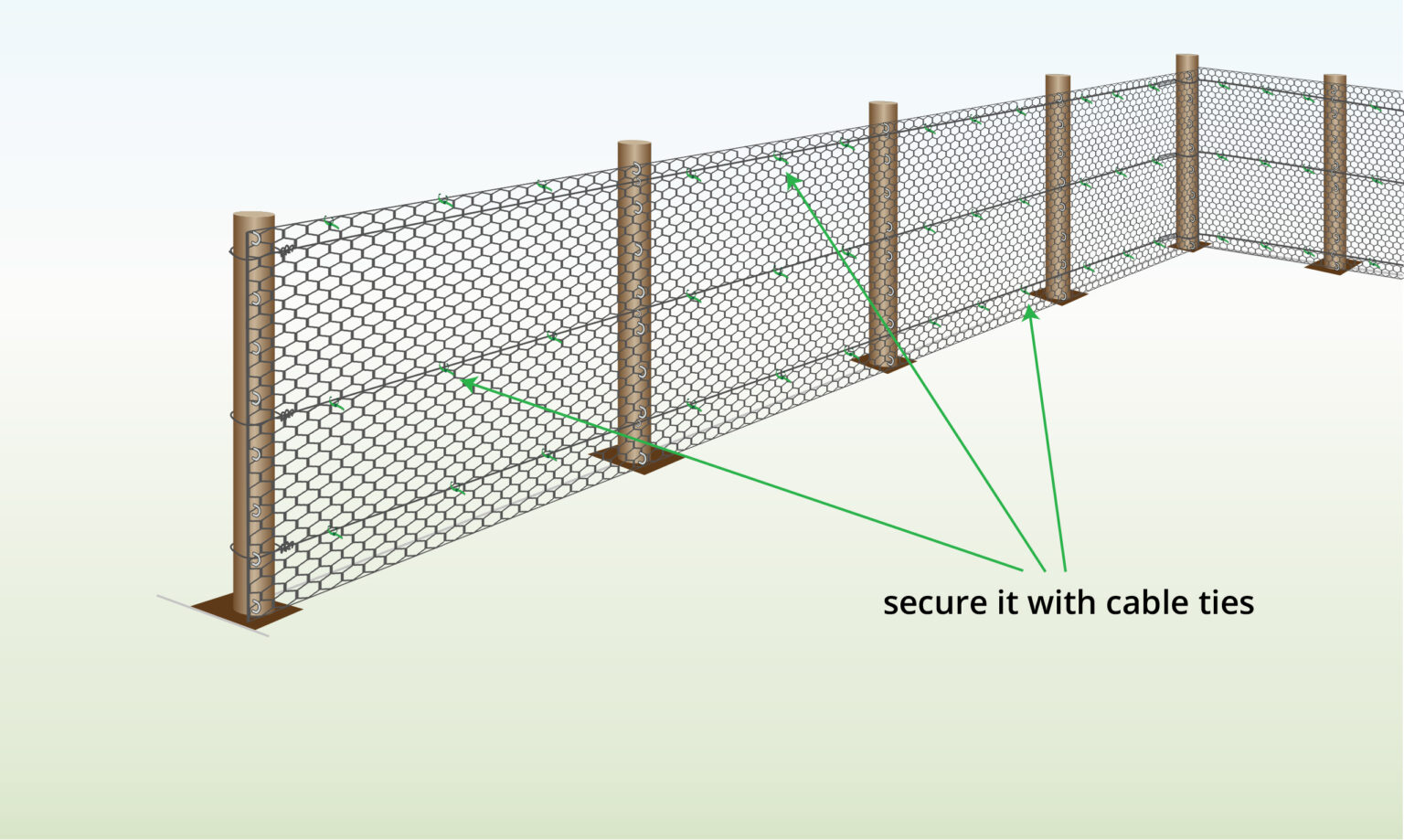
- If you installed tensioning line, secure it to the fencing in multiple spots with cable ties to help maintain tension.
- Finally, check the netting and cut any excess wire as part of the process of how to build a chicken wire garden fence.
METHOD A – Step 10) Optional: Dig a Trench and Bury Mesh
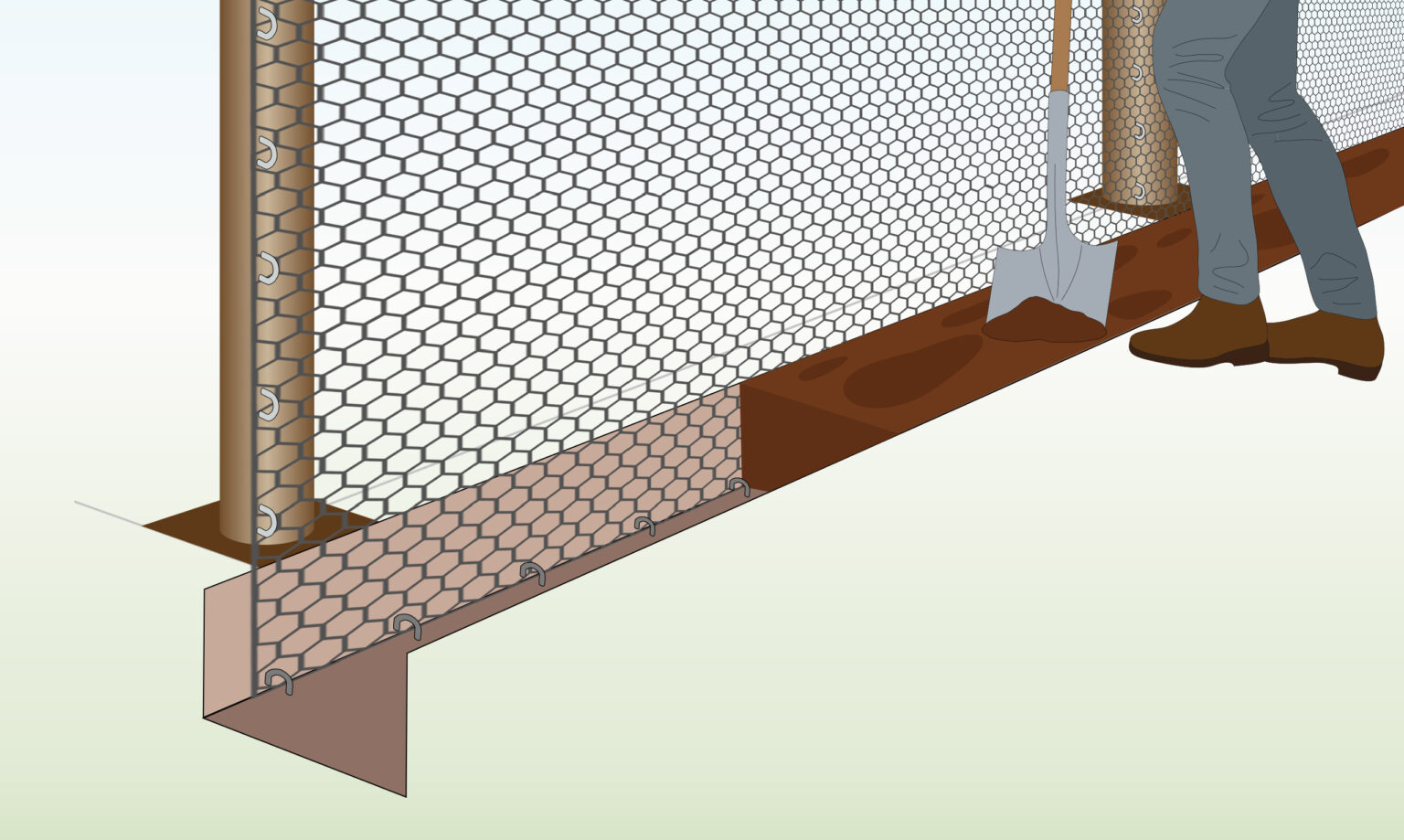
- Additionally, dig a trench along the fence line, about 15-30 cm deep.
- Place the bottom edge of the netting into the trench and secure it with pegs every 60 centimeters.
- Then, backfill the trench with soil to prevent animals from burrowing underneath.
METHOD B – Step 1) Mark Area & T Post Location

- Use spray paint or string to measure and mark the area for your DIY chicken fence.
- Also, mark the locations for the T posts, spacing them approximately 2 – 2.5 meters apart.
- For better stability, you may want to reduce the spacing between the posts.
METHOD B – Step 2) Install T Posts
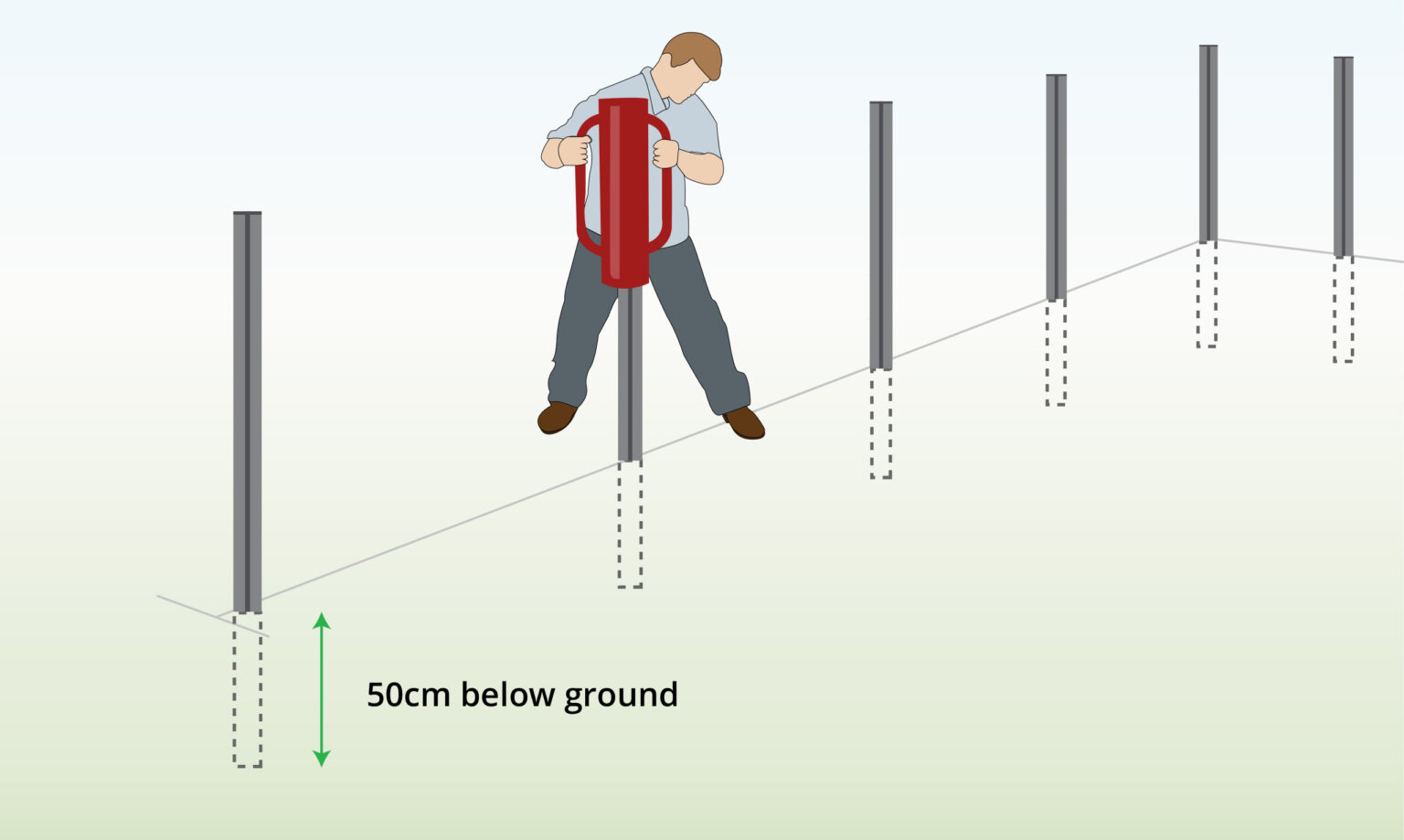
- Install the T posts in the locations you marked in step 1.
- Use a post driver or mallet to drive the end posts 50 cm into the ground.
METHOD B – Step 3) Check for T Post Height & Straightness
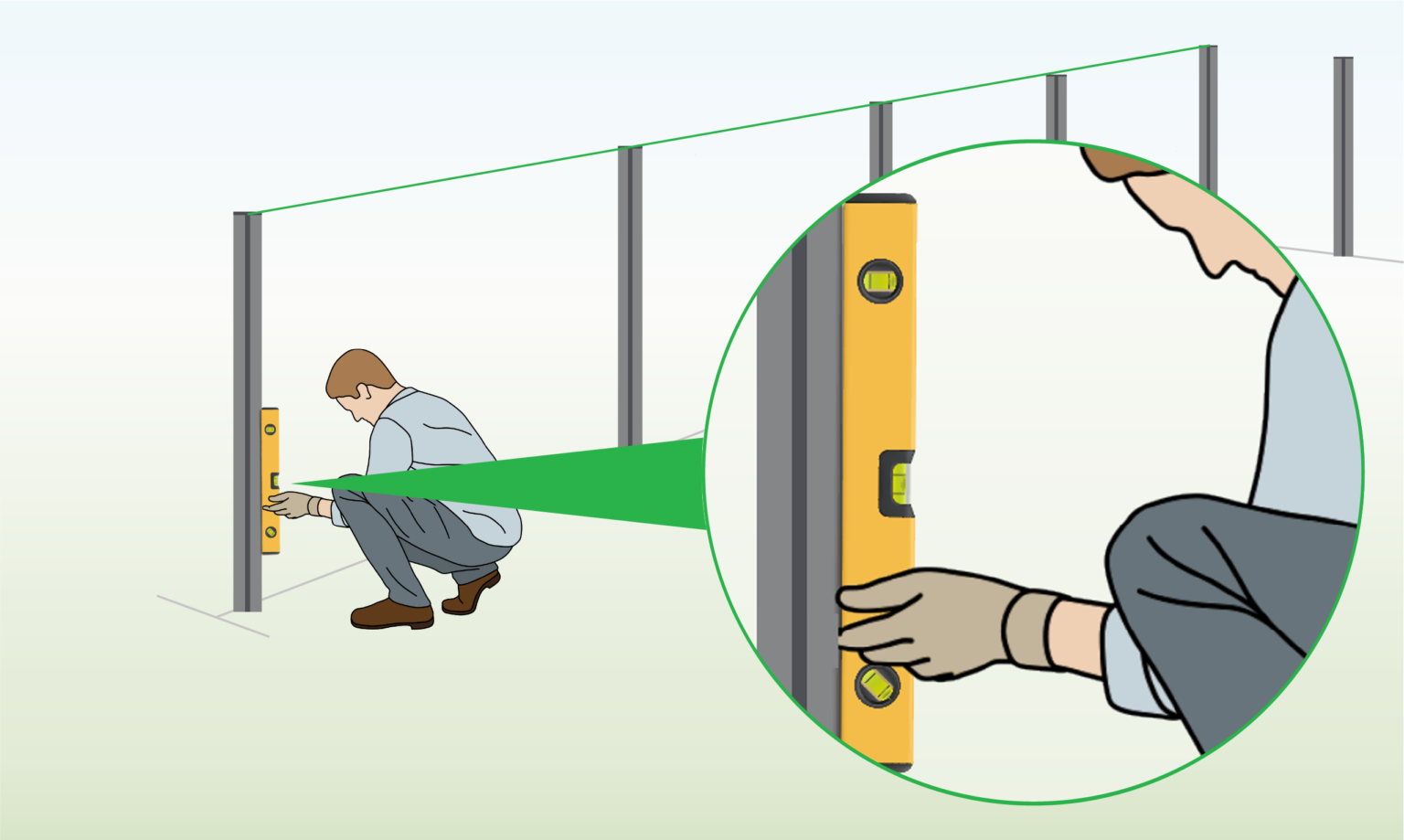
- Secure a length of string between the end posts and check their height with a tape measure.
- Ensure the post holes face each other for alignment.
- Use a spirit level to confirm the posts are straight and oriented consistently in the same direction at the same height.
METHOD B – Step 4) Install Tensioning Line
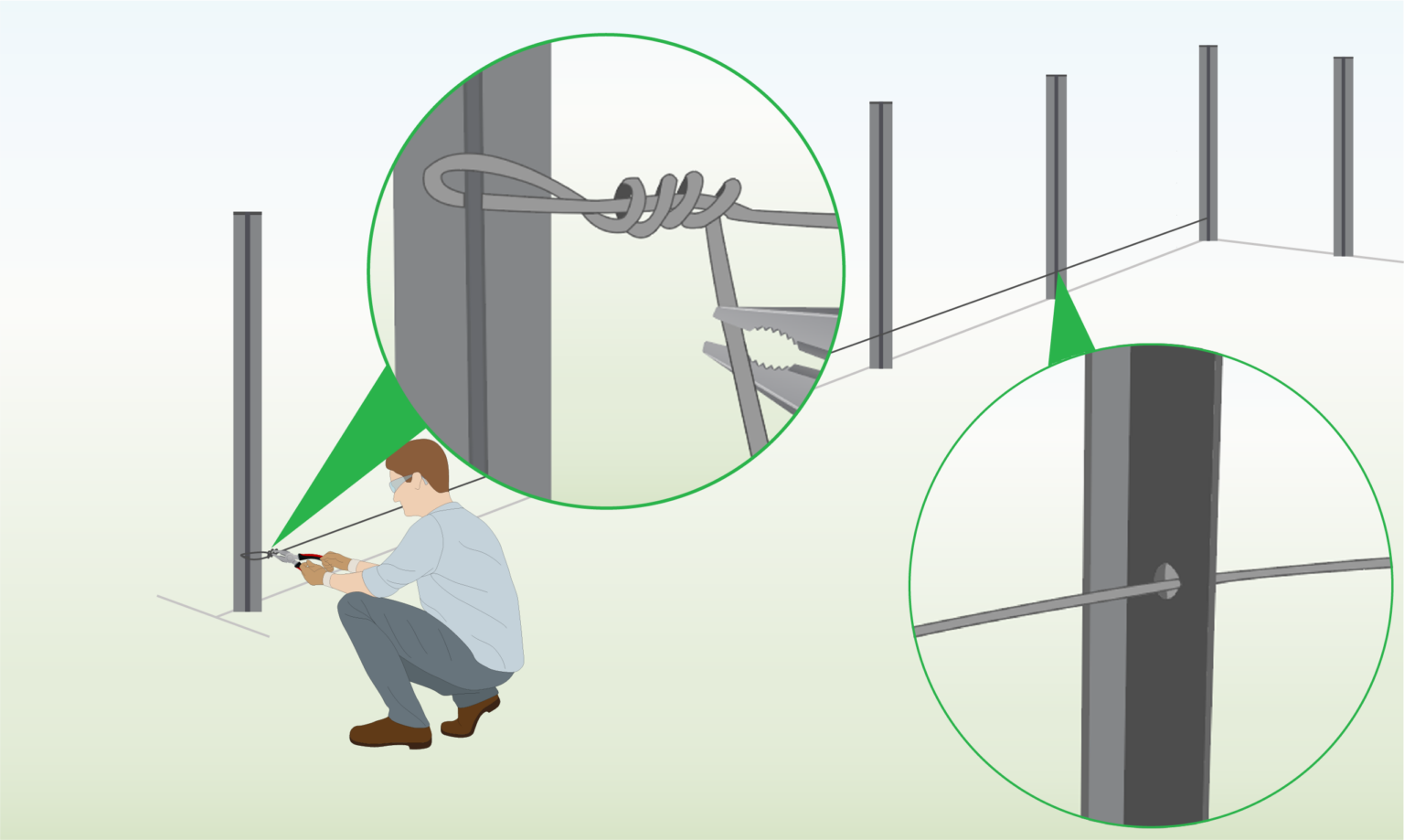
- Wrap the tensioning line around the hole of the first post and secure it by twisting the wire’s end with pliers.
- Then, thread the line through the pre-drilled holes in the middle posts and fasten it at the last post by twisting it with pliers.
METHOD B – Step 5) Complete Tension Line Installation
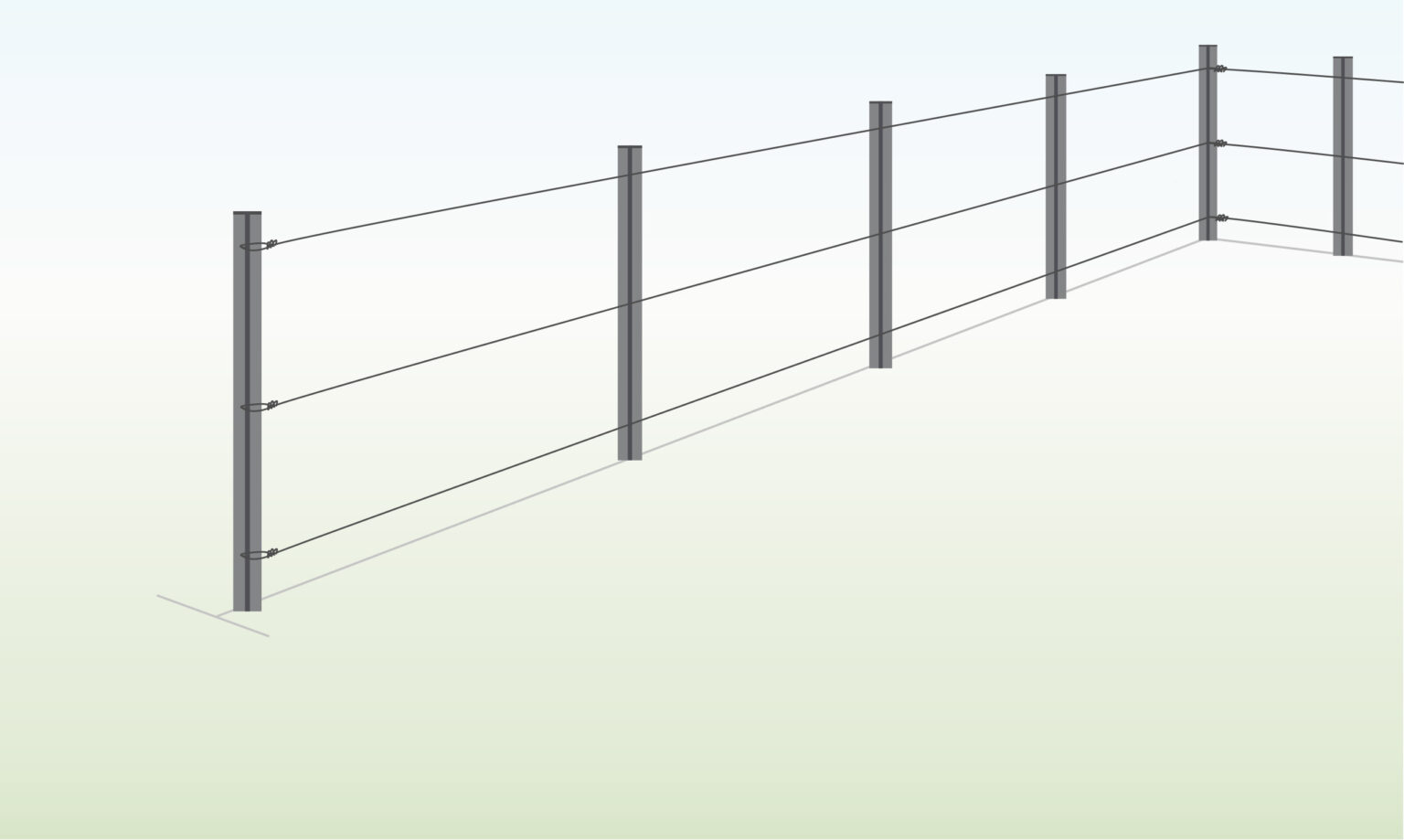
- Finish installing the tensioning line in multiple rows by following the procedure outlined in the previous step.
METHOD B – Step 6) Attach Mesh to First T Post
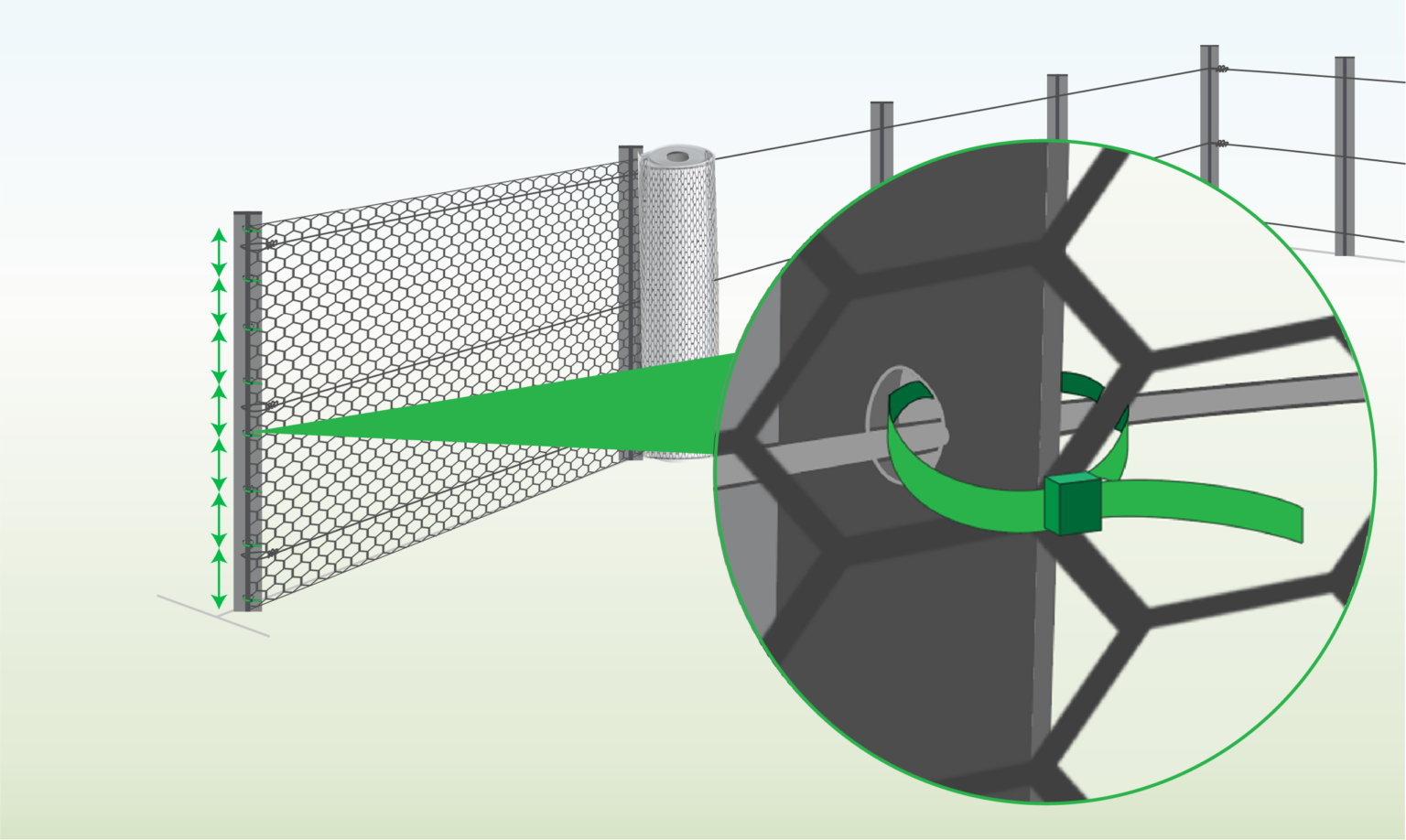
- Secure the mesh to the first post using cable ties threaded through the pre-drilled holes in the T post.
- Ensure the mesh remains straight and taut during the process.
- You can add more cable ties to completely encircle the post.
METHOD B – Step 7) Pull Mesh Tight & Continue Attaching
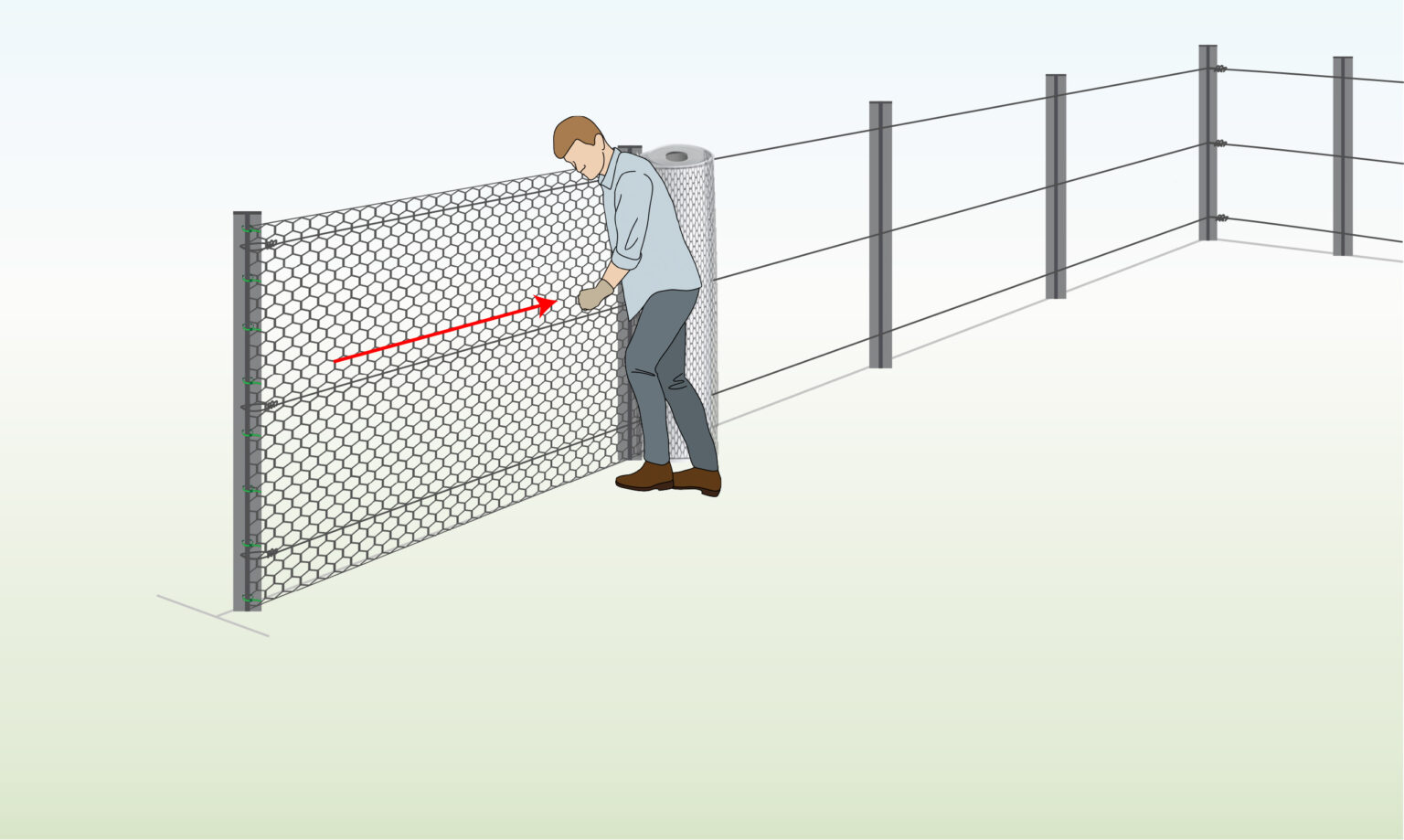
- Firmly stretch the mesh and secure it to the second post with cable ties, being careful not to pull it too tightly.
METHOD B – Step 8) Secure Remaining Mesh
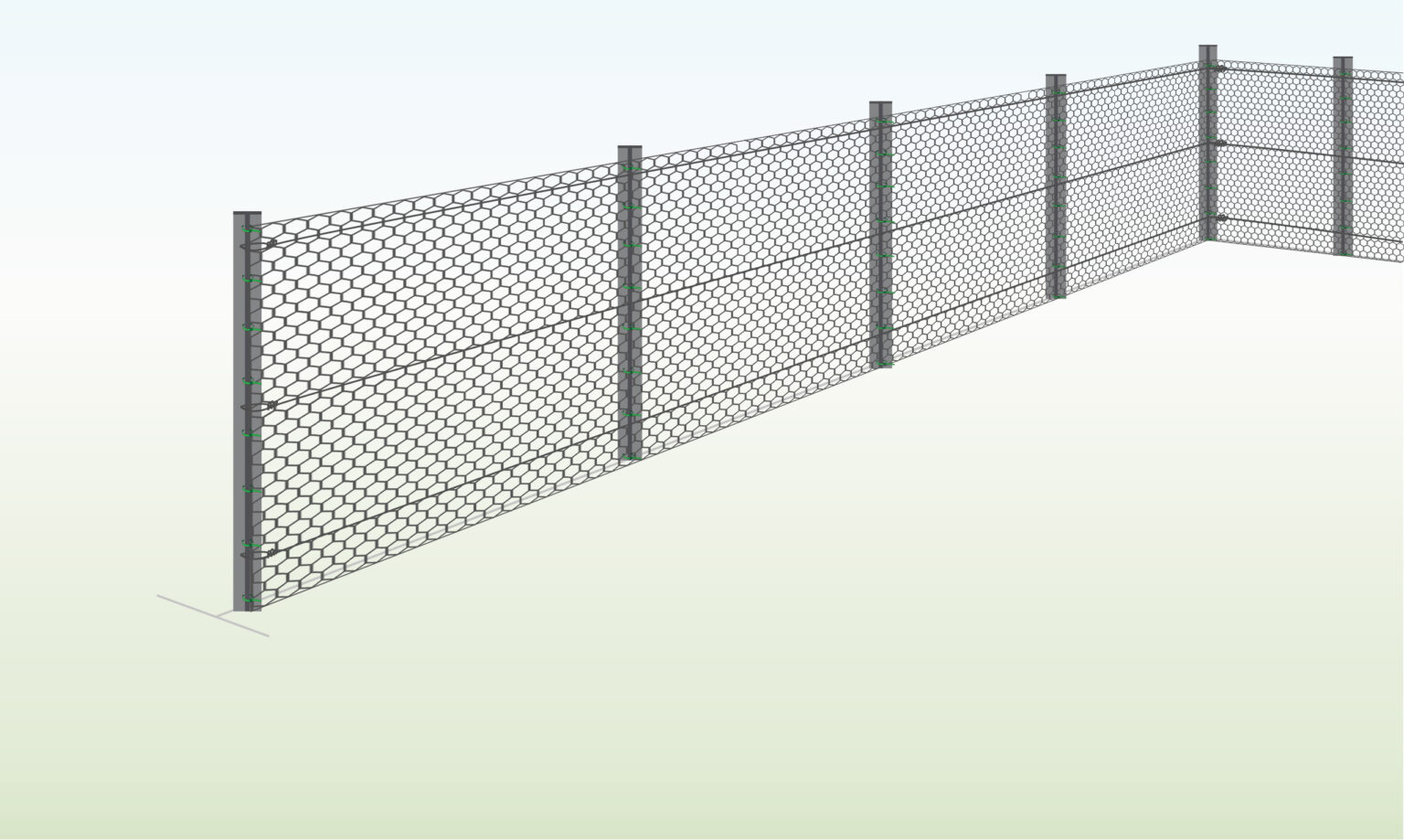
- Continue attaching the netting to all the T posts until you reach the final end post, following the procedures outlined in steps 6 and 7.
METHOD B – Step 9) Secure Mesh to Tensioning Line
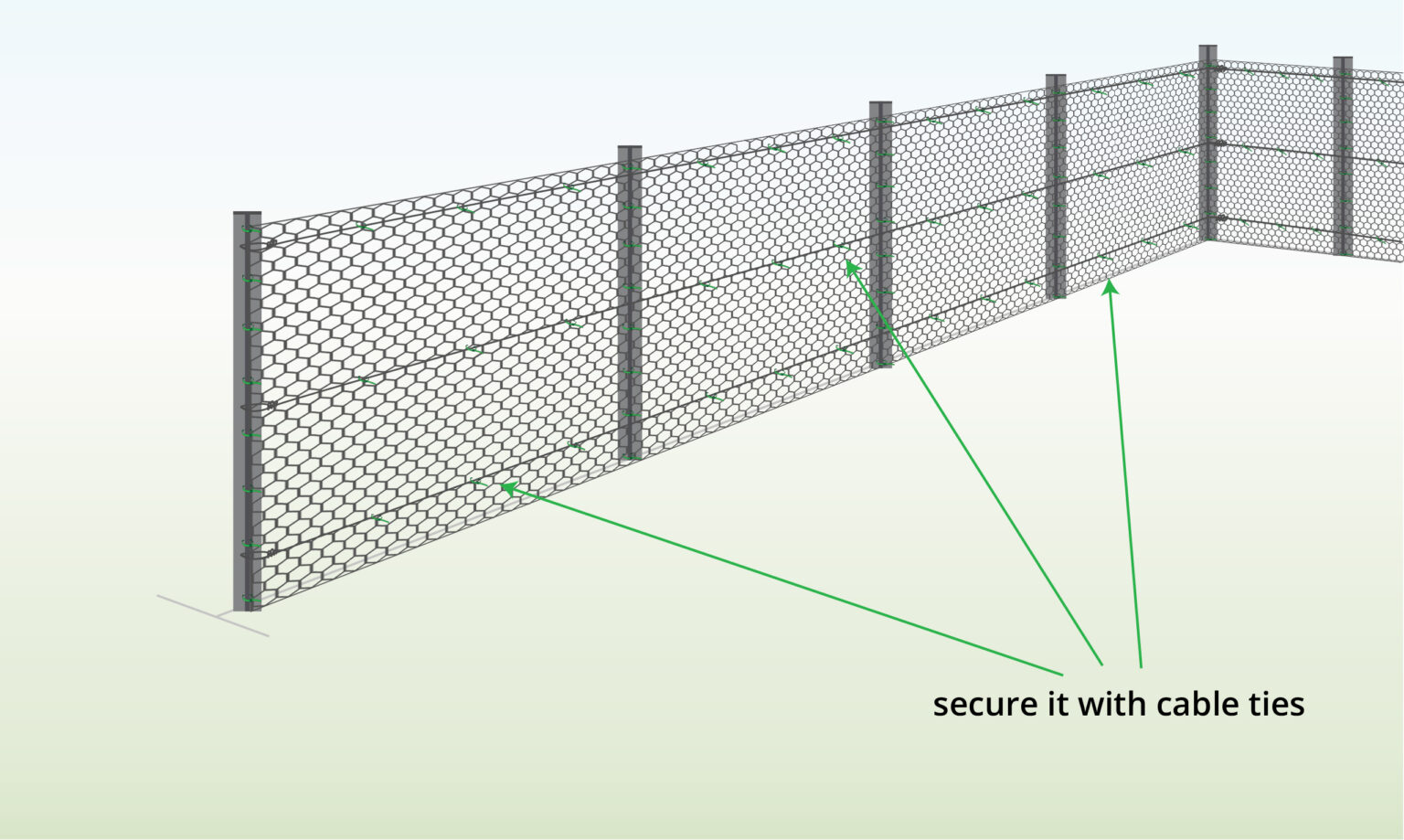
- If you installed a tensioning line, attach the mesh to it using cable ties, spacing them approximately 30-45 cm apart.
- Then, inspect the netting and trim any excess wire.
METHOD B – Step 10) Optional: Bury Mesh into a Trench
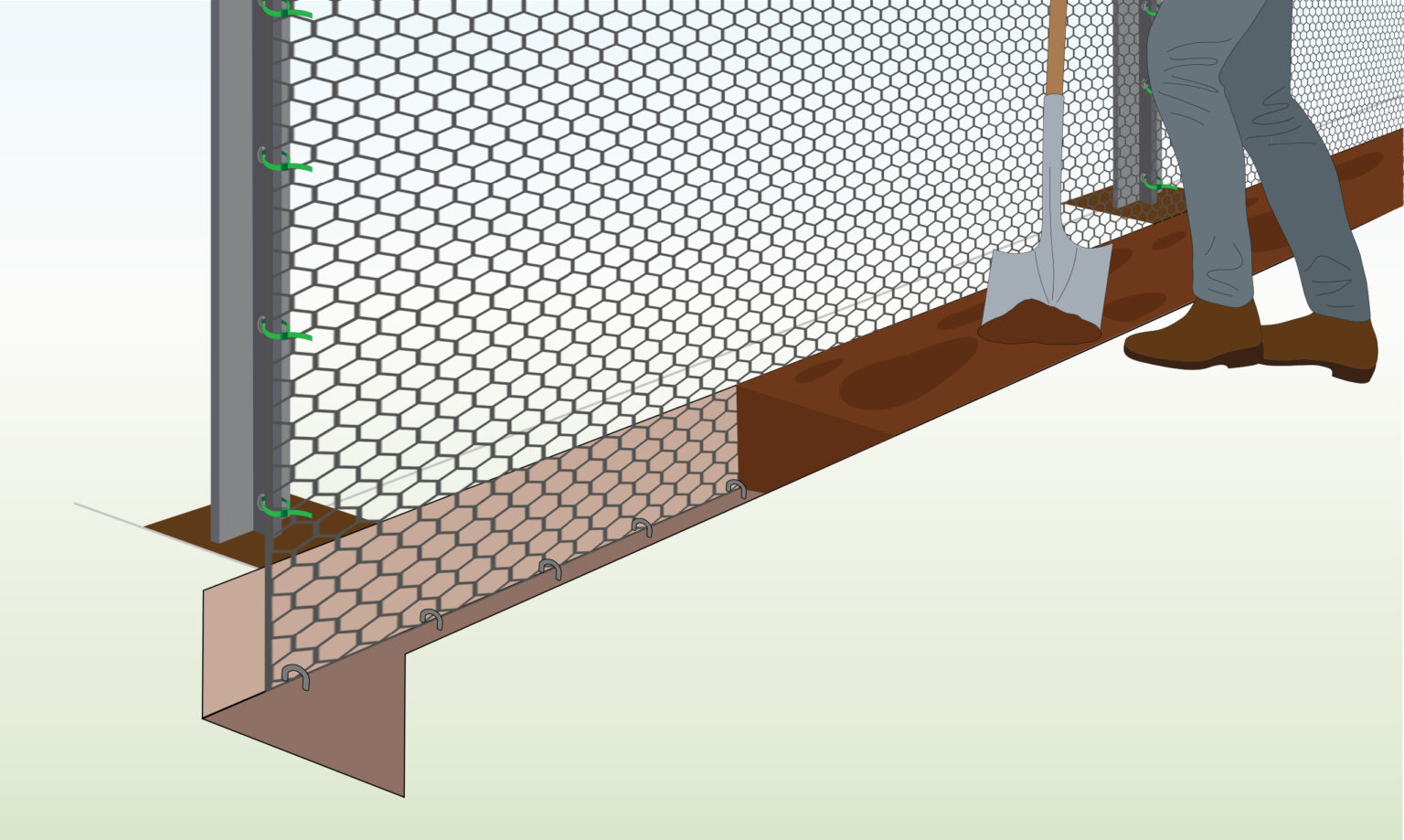
- Dig a trench along the fence line, approximately 15-30 cm deep.
- Position the bottom edge of the netting into the trench and anchor it with pegs every 60 cm.
- Finally, fill the trench with soil to deter animals from digging underneath.
Choose the Right Coating
Galvanised steel
- Galvanised steel is durable, rust-resistant, and easy to work with, making it ideal for long-term outdoor use.
- For functional purposes like livestock fencing or security, galvanised steel is often preferred for its strength and cost-effectiveness.
-
The metallic look of galvanised steel may not be ideal for residential or garden settings, and it can still rust over time, especially in harsh conditions.
PVC coated
- PVC coating offers extra protection against rust, enhances weather resistance, extends the netting’s lifespan, and makes it safer to handle by reducing the risk of injury from sharp edges.
- For decorative purposes or garden fencing where appearance matters, PVC-coated netting is a more visually appealing choice.
- PVC-coated mesh, while still strong, may be slightly less robust than uncoated galvanised steel.
Tips & Tricks
- While considering options on how to build a chicken wire garden fence, keep in mind that T posts are easier to install, but wooden posts offer greater durability.
- While putting chicken wire around a garden, make sure to pull the mesh taut but avoid overstretching, as this can weaken it and increase the risk of breaking under pressure.
- Select the hole size based on your needs: for example, smaller holes for smaller animals and larger holes for bigger ones.
- Bury the bottom edge of the mesh a few centimeters underground to prevent animals from digging underneath.
FURTHER READING
- How to Attach Chicken Wire to Posts and Different Materials – Step by step instructions on how to attach netting to different materials.
- How to Attach Chicken Wire to Bottom of Fence – A guide showing you how to attach netting to bottom of an existing mesh.
- Cutting Chicken Wire – Learn how to cut netting using different methods.
- T Post installation – Step by step instructions on how to install T post fence.
